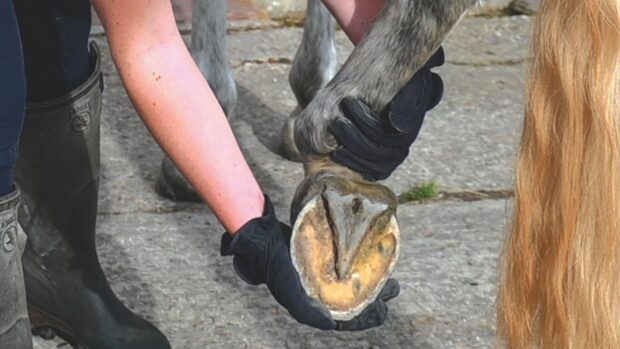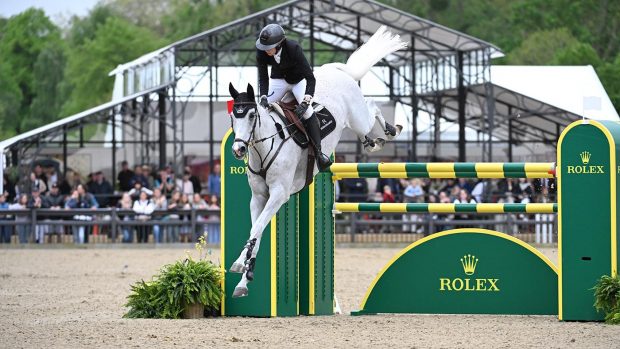WORLD Champion driver Di Hayes was spotted at Lowther driving trials using some unusual footware on her horse. H&H finds out what these pads are and what they do
DI Hayes was a team gold medallist with her Hackney mare, Hamewith Culmellie, at the single horse World Championships in Rome last year. She discovered PG shoes after “Mel” had problems with sidebone.
What do they do?
“MY vet recommended these shoes,” explains Di.
“I then found a fantastic farrier, Ricky Gaché, who fitted them for me.
“PG shoes act as shock absorbers and originate from Sweden. They are described as ‘trainers for horses’. They consist of an aluminium-based plate, which covers the whole of the base of the foot. The farrier uses a special jig to cut the aluminium to the shape of the foot. This is then nailed on, as with a traditional shoe, but with very fine nails.
“Underneath the aluminium plate, the frog is covered with impression material, which absorbs all the pressure and helps the hoof to grow.
“Finally, for every day exercise, a rubber pad, about half an inch thick, is screwed on top of the aluminium plate.
“When I compete, a different shoe is screwed in, with seven studs equally spaced all round — meaning that the foot is never unbalanced. This is again fastened with four screws. [You can get different-sized studs.] The shoes aren’t weighted and are really light.”
Di competes internationally using these shoes.
“I use the flat plates all the time at home. They make a very unusual sound on the roads — instead of the horses ‘clip-clopping’, it’s more of a ‘pad-pad’,” she says.
“They are horrendously expensive but undoubtedly worth it. Without them, my horse wouldn’t be sound.”
Where can I buy them?
THESE shoes should only be used if your vet or farrier recommends them. Farrier Ricky Gaché, who shoes Di’s horses, charges £85 for a pair.
This Q&A was first published in Horse & Hound (13 September, ’07)


